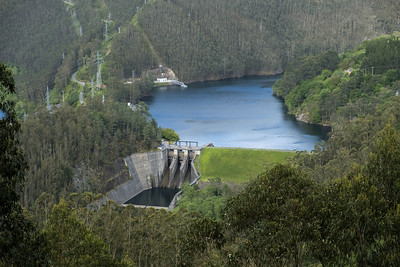What are the advantages of hydropower?
What are the advantages of hydropower?
Contributes to sustainable development
Contributes to sustainable development
it is a renewable and clean energy, the energy is obtained from falling water which is rain water, so it doesn’t consume resources and is non-pollutant.
Reduces external energy dependence
Reduces external energy dependence
This type of energy offers an excellent way to reduce external energy dependence since it is an abundant resource in our country.
Efficient
Efficient
Technological advances have made it possible to adapt the water flows from the power plants to the demand to guarantee supply at all times.
Driver of development
Driver of development
As an indigenous energy source, it promotes economic development and the generation of local employment.
Affordable
Affordable
The construction of hydroelectric dams represents a significant initial investment, however, once in operation, they are very affordable and efficient production plants.







